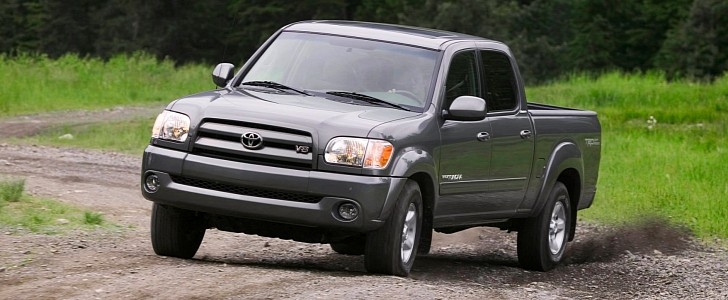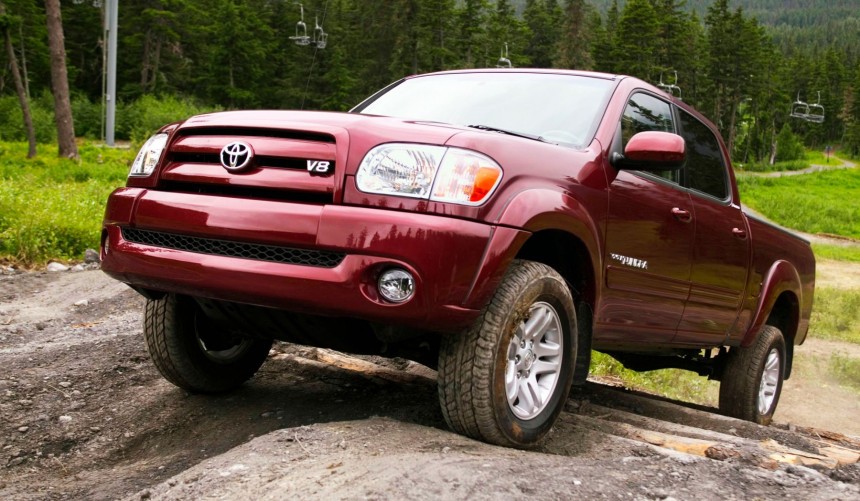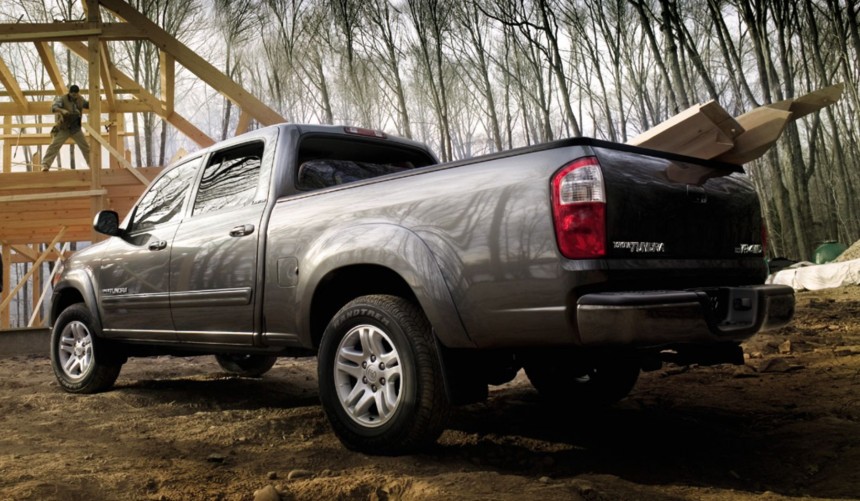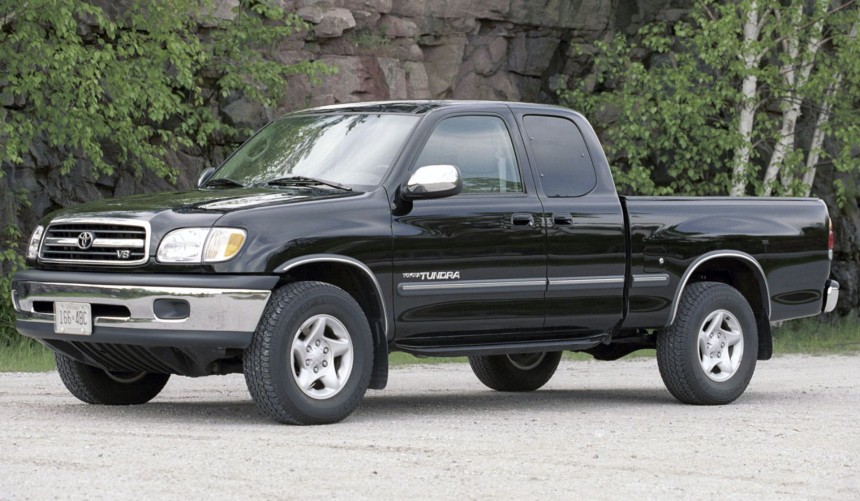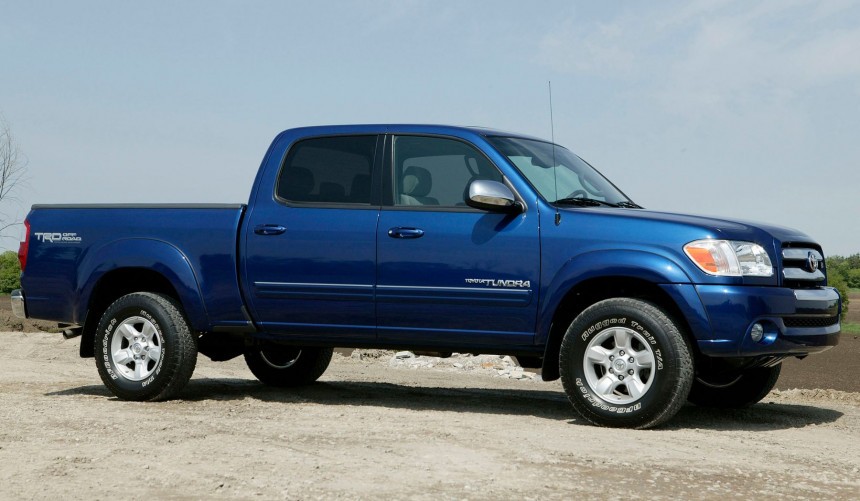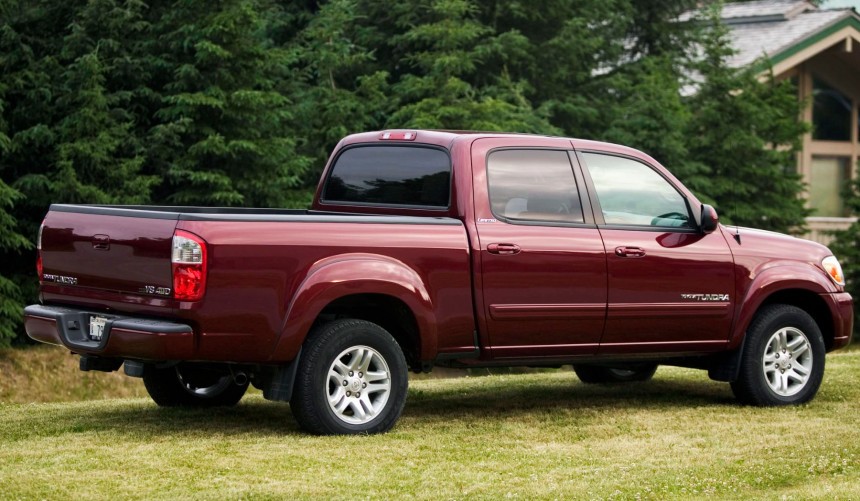The Tundra has established itself as one of the most popular choices for those looking for a reliable and capable pickup truck. However, the first-generation models manufactured from 1999 to 2006 are not indestructible and have been racking up miles, so several issues can occur. So, if you own one of these trucks or are looking to buy a used one, these are the most common problems you should pay attention to.
Introduced in May 1999 as a 2000 model, early prototypes were initially known as T150s. However, following a lawsuit by Ford, which claimed the name was too similar to its F-150, the final production version became the Tundra.
It quickly became popular, mainly because of Toyota’s renowned dependability, great off-road capabilities, and surprisingly good safety ratings for a pickup. Because of these qualities, there are still many of them out there today, and the Tundra remains one of the most popular choices for those looking for a budget-friendly truck.
Although the main reason for this is reliability, the aging first-generation Tundra is not a problem-free vehicle so let’s take a look at the five most common issues you can encounter.
One of the most frequent problems caused by extended wear and tear is failing ball joints. The ball tends to become loose and eventually pops out of its socket, or the bolt of the joint itself may break.
Symptoms of these issues include loose steering, especially while cornering or navigating through rough terrain, and a clunking sound coming from the front end.
To check the state of the ball joints, you have to lift the truck and inspect them thoroughly. Grab each front wheel and give it a good shake, and if you notice movement, it means you have to replace these components.
Another common problem with both the first-gen Tundras and Tacomas happens because the pivots that connect to the brake cables tend to rust and get stuck, or cables become loose.
If you pull on the emergency brake lever and the truck starts rolling away, it means that the cables need to be adjusted or replaced. On the other hand, if you release it and attempt to drive off, but the vehicle seems to be held back and just doesn’t move, the pivots have to be cleaned or replaced.
It is definitely a minor issue that won’t cost a fortune to fix, but as I mentioned before, it’s a really common one on these aging models.
There are two main issues to pay attention to here. The first is related to the mounting hardware, particularly the bolts, which tend to rust and break over time. The second has to do with the manifolds themselves, as they are likely to develop cracks.
The most common symptom with either issue is a ticking noise that can be heard after a cold start, usually for the first 30 seconds or so. That happens because the pressure from the exhaust will get forced through the crack or the separation caused by the failing bolts.
If you’re buying a used Tundra or own one already and encounter the ticking noise mentioned earlier, make sure to test this issue when the engine is cold. When replacing any of these parts, don’t forget also to swap out the gaskets.
These components help heat up the catalytic converter faster when starting the engine, reducing emissions and improving fuel consumption on cold starts.
Specifically, on the 4.7-liter V8, these pumps are prone to fail. One sign of this issue is a loud humming noise coming from the engine bay. Also, this can be followed by a check engine light on the vehicle’s dashboard and a small increase in fuel consumption.
If you’re looking for a used truck and you discover this problem, avoid buying it since replacing this component is usually very expensive.
The worst issue that you can encounter is common on the trucks fitted with an automatic transmission. Here, cooling hoses run from the gearbox to the main radiator’s top tank. Inside, you’ll find a dedicated cooling circuit that regulates the temperature of the transmission oil.
In some cases, a failing radiator will cause coolant to penetrate this circuit and end up mixing with the oil causing the gearbox to fail. The most common sign of this is gear slip and a pink foam on the transmission oil dipstick.
If the issue is detected in time, a radiator swap, along with a complete cooling system and transmission oil replacement, can solve it without the need for extensive repairs. However, if the truck is driven for an extended period with coolant mixing with oil, extensive damage can occur, and a complete gearbox rebuild or replacement is required.
Finally, if you have decided to buy a used Toyota Tundra, make sure to perform a pre-purchase inspection regardless of how well it seems to run.
Additionally, if you own one, always check and replace the fluids following the manufacturer-specified intervals. Also, have it checked regularly, so that if some of these problems occur, you can have them fixed before they end up damaging other components.
It quickly became popular, mainly because of Toyota’s renowned dependability, great off-road capabilities, and surprisingly good safety ratings for a pickup. Because of these qualities, there are still many of them out there today, and the Tundra remains one of the most popular choices for those looking for a budget-friendly truck.
Although the main reason for this is reliability, the aging first-generation Tundra is not a problem-free vehicle so let’s take a look at the five most common issues you can encounter.
Failing Ball Joints
Symptoms of these issues include loose steering, especially while cornering or navigating through rough terrain, and a clunking sound coming from the front end.
To check the state of the ball joints, you have to lift the truck and inspect them thoroughly. Grab each front wheel and give it a good shake, and if you notice movement, it means you have to replace these components.
Loose or Stuck Emergency Brake
If you pull on the emergency brake lever and the truck starts rolling away, it means that the cables need to be adjusted or replaced. On the other hand, if you release it and attempt to drive off, but the vehicle seems to be held back and just doesn’t move, the pivots have to be cleaned or replaced.
It is definitely a minor issue that won’t cost a fortune to fix, but as I mentioned before, it’s a really common one on these aging models.
Cracked Exhaust Manifolds or Broken Mounting Bolts
The most common symptom with either issue is a ticking noise that can be heard after a cold start, usually for the first 30 seconds or so. That happens because the pressure from the exhaust will get forced through the crack or the separation caused by the failing bolts.
If you’re buying a used Tundra or own one already and encounter the ticking noise mentioned earlier, make sure to test this issue when the engine is cold. When replacing any of these parts, don’t forget also to swap out the gaskets.
Secondary Air Pump Failure
Specifically, on the 4.7-liter V8, these pumps are prone to fail. One sign of this issue is a loud humming noise coming from the engine bay. Also, this can be followed by a check engine light on the vehicle’s dashboard and a small increase in fuel consumption.
If you’re looking for a used truck and you discover this problem, avoid buying it since replacing this component is usually very expensive.
Radiator Leaks on Automatic Transmission Models
In some cases, a failing radiator will cause coolant to penetrate this circuit and end up mixing with the oil causing the gearbox to fail. The most common sign of this is gear slip and a pink foam on the transmission oil dipstick.
If the issue is detected in time, a radiator swap, along with a complete cooling system and transmission oil replacement, can solve it without the need for extensive repairs. However, if the truck is driven for an extended period with coolant mixing with oil, extensive damage can occur, and a complete gearbox rebuild or replacement is required.
Finally, if you have decided to buy a used Toyota Tundra, make sure to perform a pre-purchase inspection regardless of how well it seems to run.
Additionally, if you own one, always check and replace the fluids following the manufacturer-specified intervals. Also, have it checked regularly, so that if some of these problems occur, you can have them fixed before they end up damaging other components.
